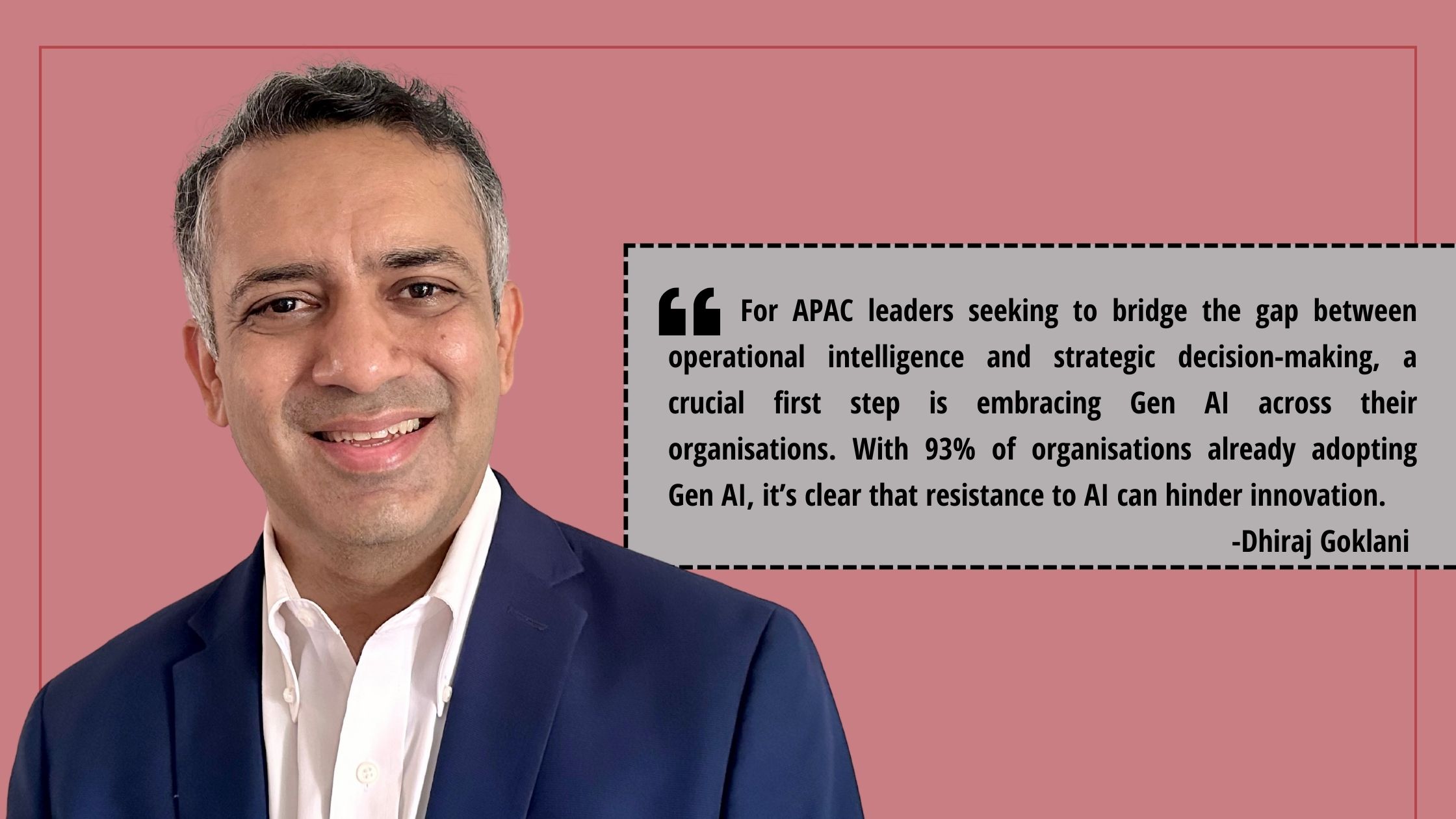AsiaTechDaily – Asia's Leading Tech and Startup Media Platform

Splunk’s Dhiraj Goklani on How Observability Fuels Digital Resilience in a Complex World – Part2
In our first conversation with Dhiraj Goklani, Area Vice President for South Asia at Splunk, we explored how the APAC region has evolved in its approach to digital transformation and the growing importance of data in driving business outcomes. In this second part of our interview, we continue to delve into how leadership mindsets have shifted over the past two decades, particularly in terms of aligning technology investments with strategic growth, innovation, and digital resilience.
With more than 20 years of experience, Goklani sheds light on how organizations in APAC are increasingly viewing technology not just as a tool for operational efficiency, but as a critical driver of business growth and competitive advantage.
As organizations navigate this new era of technology investments, Goklani emphasizes the importance of adopting AI/ML technologies to improve operational intelligence. In particular, the report highlights challenges faced by businesses across the region, from alert fatigue to burnout among staff.
With over two decades of experience, how have you seen the leadership mindset shift in aligning technology investments with business outcomes in the APAC region?
Over the past two decades, the way APAC leaders approach technology investments has changed dramatically. What used to be all about improving efficiency and cutting costs has now become a strategic focus on using technology to drive growth and innovation, build digital resilience and deliver better business outcomes.
For example, according to our latest State of Observability report, organizations spending an average of $1.2 million annually on observability solutions are seeing remarkable returns, with $2.4 million in business value generated—a return of 2.67x their investment.
This significant ROI stems from observability’s ability to free up valuable developer time. At leading organizations, developers spend 38% more time on innovation compared to their peers in less mature organizations, who are often tied up with routine tasks like maintenance, alert handling, and configuration. By streamlining workflows and reducing time spent troubleshooting, observability empowers teams to focus on creating new products, optimizing customer experiences, and driving strategic initiatives.
Investments in capabilities such as effective observability are proving to be more than just a technical necessity—they’re a powerful driver of innovation and business growth.
The State of Observability report reveals critical insights. What are the top three findings that you believe APAC organizations should act upon immediately?
Firstly, APAC organisations should streamline their toolsets. Many organisations, particularly in Singapore, are managing an overwhelming number of tools which leads to alert fatigue and talent burnout.
It’s imperative that organizations reduce complexity by streamlining their observability toolsets. By focusing on tools that deliver high fidelity and clear, actionable insights, teams can more easily distinguish between critical incidents and less urgent issues, reducing the risk of downtime and protecting customer loyalty.
Next, investing in AI/ML is essential for improving alert fidelity. The report highlights that Australia and New Zealand (ANZ) are leading with the highest alert fidelity at 67%, while Japan struggles with just 49% accuracy. Investing in AI/ML technologies can improve alert accuracy, helping teams respond faster and more effectively. This is particularly critical for organizations in Japan, where inaccurate alerts are leading to higher customer-reported incidents and operational inefficiencies.
Similarly, Singapore faces challenges with false positives, with 31% of respondents describing them as “highly problematic”, compared to just 13% globally. Investing in AI/ML can help mitigate these issues and drive better outcomes across the region.
Lastly, APAC organisations should address staffing and burnout. With 82% of Singaporean organisations reporting that key staff members are leaving due to workload and false positives, and Japan facing similar challenges with understaffed teams, it’s clear that addressing burnout is urgent. APAC organisations must prioritise investing in talent, improving workload distribution, and tool consolidation, while leveraging AI/ML to ease the burden on teams and prevent burnout.
What advice would you give to APAC leaders looking to bridge the gap between operational intelligence and strategic decision-making?
For APAC leaders seeking to bridge the gap between operational intelligence and strategic decision-making, a crucial first step is embracing Gen AI across their organisations. With 93% of organisations already adopting Gen AI, it’s clear that resistance to AI can hinder innovation.
To stay ahead, leaders must establish clear AI principles to guide their decisions and ensure alignment across teams. In fact, 82% of leaders have already implemented Gen AI security policies, compared to just 46% of developing organizations. This proactive approach helps mitigate risks like data leakage, which concerns 49% of respondents.
Collaboration and integration are key. As organizations become more digitally resilient, breaking down silos between software engineering, IT operations, and security teams are pivotal. 76% of leading organizations have increased collaboration with IT operations to improve resilience. Consolidating tools and reducing dashboard overload can also optimize decision-making.
AI adoption should be approached progressively. Leaders need to strike a balance between innovation and risk management by integrating AI in phases. Organizations with well-established AI policies are better positioned to exploit AI’s potential—such as stronger security and improved operational efficiency—while mitigating the risks associated with it. As AI evolves, APAC leaders must stay adaptable, integrating feedback from both business and technical teams to fine-tune their AI approach to maintain a competitive edge.
How has Splunk’s acquisition by Cisco accelerated its innovation and ability to provide seamless workflows across IT teams?
Since becoming part of Cisco, Splunk has been moving faster than ever to deliver innovative solutions and create smoother workflows for IT professionals. By integrating Cisco’s world-class networking and security expertise with Splunk’s market-leading observability and AI capabilities, IT teams gain unparalleled visibility across complex digital ecosystems. This combined capability greatly enhanced visibility – enabling quicker troubleshooting, proactive issue resolution, and improved collaboration across teams.
For example, the integration of Cisco and Splunk observability capabilities allows for a more streamlined approach. Splunk observability portfolio, now supercharged by AppDynamics, empowers IT teams with full-stack observability linked to business performance for hybrid and three-tier applications while accelerating troubleshooting resolution across teams- building resilience with unified observability.
As Splunk accelerates its innovation and enhances its offerings, the synergy with Cisco is proving to be a game-changer. The combined capabilities of Splunk’s observability portfolio and Cisco’s networking and security expertise provide APAC organizations with a comprehensive approach to managing increasingly complex digital ecosystems. This integration empowers IT teams with quicker troubleshooting, more proactive issue resolution, and improved collaboration by offering full-stack observability, from hybrid applications to business performance. With the stakes higher than ever, businesses in the region are aiming for greater resilience and agility as they move toward a digital-first future.



